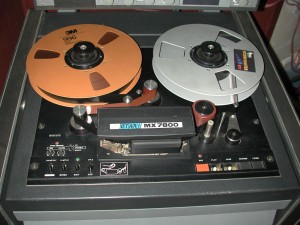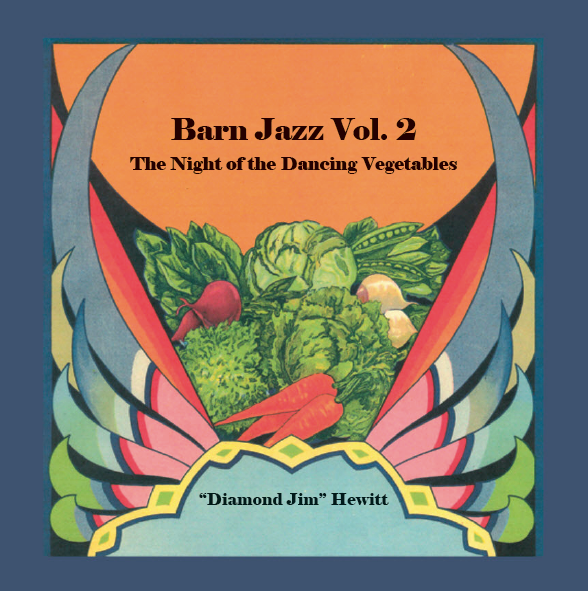So I have this great old (vintage 1973) Otari MX7800 1″ reel to reel deck that I have used sparingly over the past few years (Lynn calls it Godzilla because its the largest piece of pro audio gear I own, weighing in at about 250 lbs.). It sounds great but takes a bit of TLC. New 1″ tape is not cheap, about $150.00 per reel, and I am grateful that it is still available from places like ATR.
So when I found 5 reels of used 1″ Ampex 456 Grand Master Tape for $30.00 per reel shipped from Canada, I said, hey that sounds like a helluva deal, right? Tapes arrived today and I put one on with the intention of erasing the old program material. These apparently were used at a television station in Ontario, Canada but the owner did not know how old they were or what kind of condition they were in. I decided to take a chance.
After about 10 minutes of running the first reel through Godzilla, the old lady started slowing down, slowing, slowing, until eventually she would not rewind or fast forward, and could barely run the tape at play speed. I was of course alarmed, thinking that some part had finally failed, some obscure capacitor or relay was fried, and the closest repair depot for tape machines was, of course, in Denver!
After a few frantic calls I was able to get back with Mike Everhart, a very talented engineer and audio tech in Portland OR. Mike had been the tech for this machine for a while when it was owned by Jordan Richter, a young Portland recording engineer. Jordan had sold me the machine back in 2007 I think it was. This old lady has a storied past, previously owned by the famous American punk band, Sleater-Kinney (with Carrie Brownstein from Portlandia no less).
When I arrived in Portland to pick it up Mike was there still doing some last minute tinkering! Talk about dedicated. Anyway to make a short story longer, Mike walked me through some basic questions over the phone and told me that old Ampex 456 formulations were very prone to excessive SHEDDING due to a breakdown in the tape chemical adhesive over time. This causes a buildup of brown gunk over the tape guides and heads, which was immediately apparent once I removed the tape. Mike suggested I thoroughly clean the guides and heads and try again with some newer tape. Brilliant, KISS is the lesson here.
Yes that worked, of course, now Godzilla is cranking along running newer tape just fine. Sometimes vintage is great, sometimes old stuff is just old, and you learn the hard way. Fortunately the price was not too dear this time. Now its time to Shred, not Shed!


















Fungus Amongus
So I read this article from The Economist 9/22/12:
MELODIOUS SOUND FROM FUNGUS? The sound of a Stradivarius violin is the time-tested standard of excellence. The warm, mellow tones of the violins made during the late 17th and early 18th centuries by Antonio Stradivari were a combination of extraordinary craftsmanship and created in his workshop in Cremona from different types of wood and, possibly, different chemical treatments. Today, Dr. Francis Schwarze of the Swiss Federal Laboratories for Materials Science and Technology is seeking to equal the sound of the Stradivarius by using a fungal treatment in order to make what he calls “mycowood.” Knowing that sound travels faster through healthy wood, which is stiff and dense, than it does through soft wood that results from a fungal attack, Dr. Schwarze began applying two types of fungus to Norway spruce, used for the instrument’s body, and to sycamore, for the back, ribs and neck, to make his violins. The unusual thing about the fungi that Dr. Schwarze used is they thin the cell walls of wood without destroying them. After the fungi has done their job, he treats the planks with a gas that kills the infection. The result is a mycowood instrument that a panel of experts thought was a Stradivarius.
Does that mean if I take my old fiddle and give it a fungal treatment, will it sound like a Strad? Somehow I doubt it. Besides, its a FIDDLE!